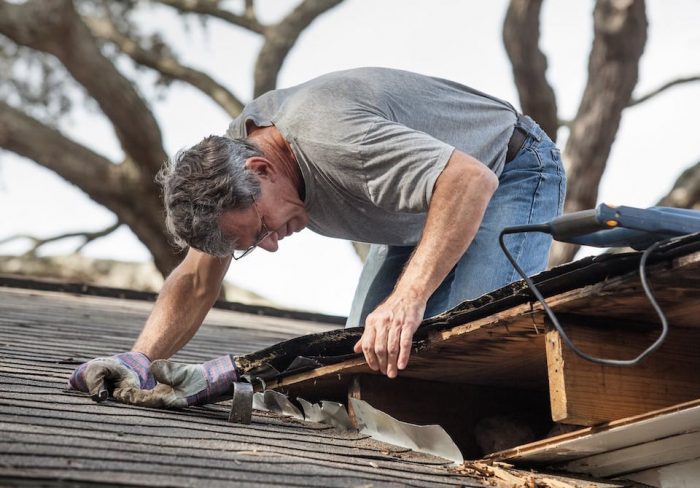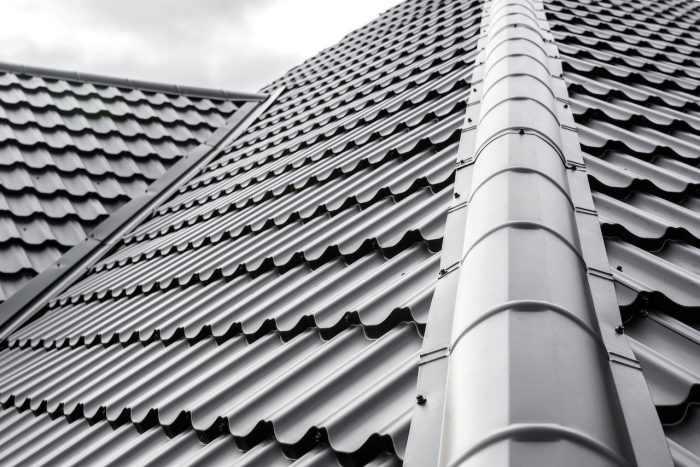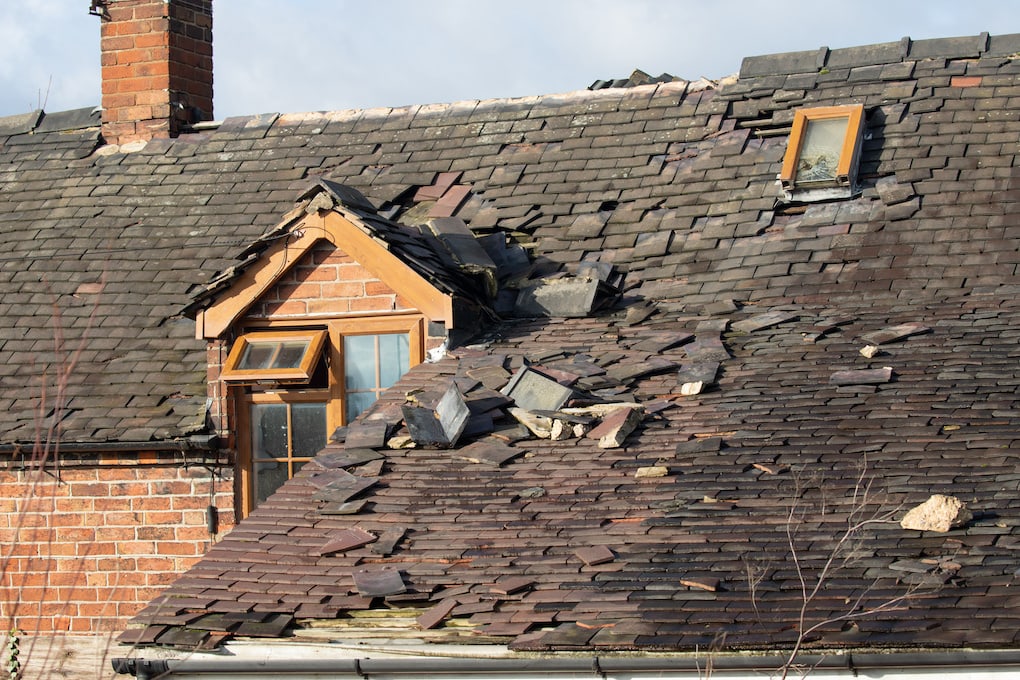When a storm or other natural disaster damages your roof, you may be left wondering the best way to get roof damage coverage and file an insurance claim. It can be difficult to know what type of damage is covered by homeowners insurance and which types are not. This blog post will give you a step-by-step guide on how to get the coverage you need when you’re facing unexpected roof damage.
What to do if You Have Roof Damage
Roof damage can occur at any moment, in any location, and no matter what, it’s going to be a surprise you’re not ready for. However, depending on the severity of the damage, there are a few key steps you’ll want to take.
- First, make sure you and your family are safe from harm. Hurricanes and tropical storms are not uncommon where we are in Florida, and across the country, you may face tornadoes, hail, and floods, among other severe weather. So the first thing you want to do is ensure everyone is safe.
- Make sure there is no risk of more severe weather, and if so, get to safety. Then, make sure you have power and running water in the event of mass outages. This takes precedence over any roof damage. But also, if your roof is damaged enough to cause immediate leaks, you should tarp it to protect your property from any further damage from water leaks.
- Check your property and document and note any damage you can see. Some may not be completely obvious, but if you notice any missing, loose, cracked, or dented shingles, take note of that. If it is safe to do so, get on a ladder and take photos of the damage you see at first glance. And also, check your interior for signs of immediate water leaks in the attic.
- Call your local contractor and schedule an estimate for the damages. This will get the ball rolling and ensure you get your roof repaired sooner than later.
- File an insurance claim. This can be a little complicated, and it’s why we’re going over how to best get your roof damage covered by insurance, and part of that is filing your insurance claim quickly and correctly.
What Kind of Roof Damage is Covered by Insurance?

There are various sections of your homeowner’s insurance policy, and the dwelling portion includes your home’s structure and the roof. For the most part, roof damage is covered by insurance, but there are definitely stipulations. Roof damage that is covered includes:
- Sudden and accidental damage
- Damage from hail and windstorms
- Lightning strikes
- Falling debris
- Damage due to snow, ice, or sleet
- Fire or smoke damage
What Roof Damage is NOT Covered by Insurance?
Other types of roof damage aren’t immediately covered under a standard warranty but may be considered add-ons to your insurance, depending on where you live.
- Negligence and general wear and tear
- Damage due to infestation of animals or insects
- Damage caused by earthquakes or floods
- Damage due to failed DIY repairs
Tips for Filing a Roof Claim
Properly filing your insurance claim is essential to getting the coverage you need and getting repairs done in a timely manner. There are a few key steps to take when filing your roof claim to make sure everything goes smoothly.
- The first step is to call your local contractor and have them inspect the damage. They will provide you with an estimate for repairs that can be used on your insurance claim.
- Read your policy thoroughly before filing the claim, so you don’t have any surprises when you talk to your insurance provider.
- Don’t wait too long to file. The sooner you do, the better your chance of getting coverage for roof repair costs.
- If it’s a natural disaster or other severe weather events that damaged your roof, make sure you and any family living in the home are safe before doing anything else. Always take care of safety precautions before taking care of structural damages—you want to minimize water damage to your property.
- Never do any roof repairs yourself, or let family members do them without the supervision of a professional contractor. DIYing these types of fixes can cause more damage and significantly increase costs in the long run, and void some insurance coverages or warranties.
- Lastly, contact an agent with your provider if you’re not sure what type of coverage you have on your dwelling for insurance purposes. Always be sure that you are covered before filing a claim (particularly for something as important as structural damages). You want to know exactly what is being replaced, so there are no surprises down the line—that way, everything is fully documented and accounted for from start to finish.
Other Key Things to Note
There are a few other things you’ll want to know before filing a roof claim or roof repair.
Avoid Roofing Scams
Watch out for roofing repair scams. Unfortunately, there are some sketchy contractors, often referred to as “fly-by-night” contractors, who will flock to an area or state that has just had severe damage and will door knock to offer roof repairs to residents.
They may not be credited or licensed in that state and are just in town for a quick buck. These scams might pocket insurance claim money and do a cheap and poor job repairing your roof. Only hire reputable local contractors to fix your roof damage.
Higher Premiums for Premium Roofs

Some roofing materials such as wood or metal may actually cost more to insure or not get the same coverage as other, more standard roofing materials like asphalt shingles. For example, some metal roofs can dent easily from hail and thus won’t be covered under your policy. So you may need to add on that coverage.
Frequently Asked Questions
Will insurance cover a 20-year-old roof?
Most standard homeowner’s policies will cover a roof up to 20 years and anything past that that may have limited coverage. Roofs that last longer than that (slate, metal, tile) will have to rely on some warranty coverage to get complete replacements covered.
Also, total replacements based on an old roof’s wear and tear are not covered, but they could potentially cover sudden roof damage from a storm. But, again, always check your policy for details.
Will insurance cover water damage caused by a roof leak?
A standard policy would cover water damage for certain types of accidents, like if a fallen tree branch causes a roof leak. However, a leaky roof that has been ignored or poorly repaired would not be covered.
Will my premium go up after getting roof repairs?
It depends! The short answer is yes. But, certain roofing materials like a premium metal roof could actually lower insurance rates because of how long the roof lasts and how well it stands up to bad weather.
To recap, to get your roof damage covered by insurance, you should a) know the ins and outs of your policy so you can be prepared should the time come. b) add-on specific weather-related coverage like flood and hurricane insurance to your standard policy depending on the state you live in. c) call a reputable contractor to do your inspection and give you an accurate insurance estimate.
When you find yourself facing roof damage and need your roof repaired right away, call Secured Roofing and Restoration. Our expert team can help you navigate the insurance process and act fast to ensure your roof gets repaired and back in shape as soon as possible. Visit our storm damage repair page for more info!
